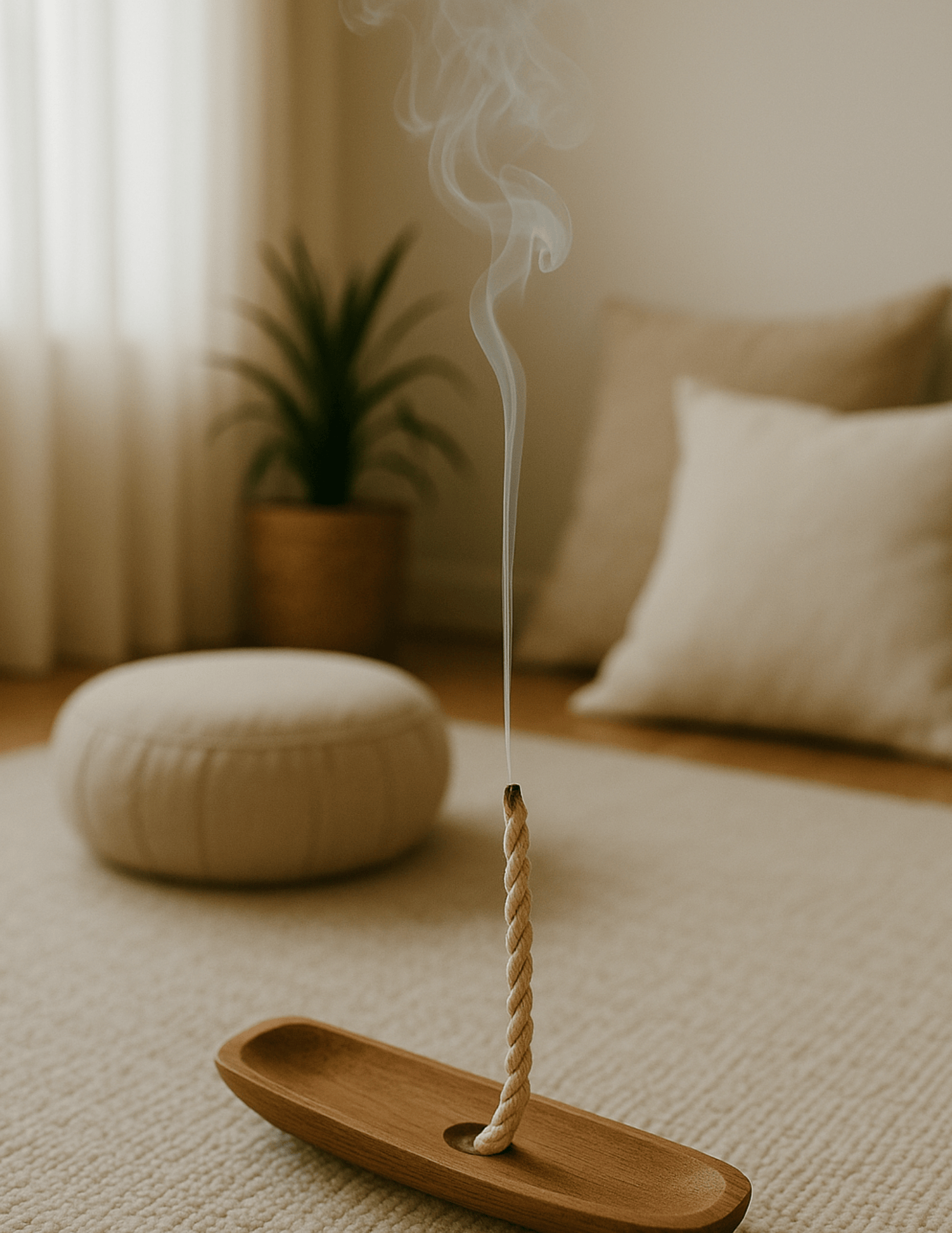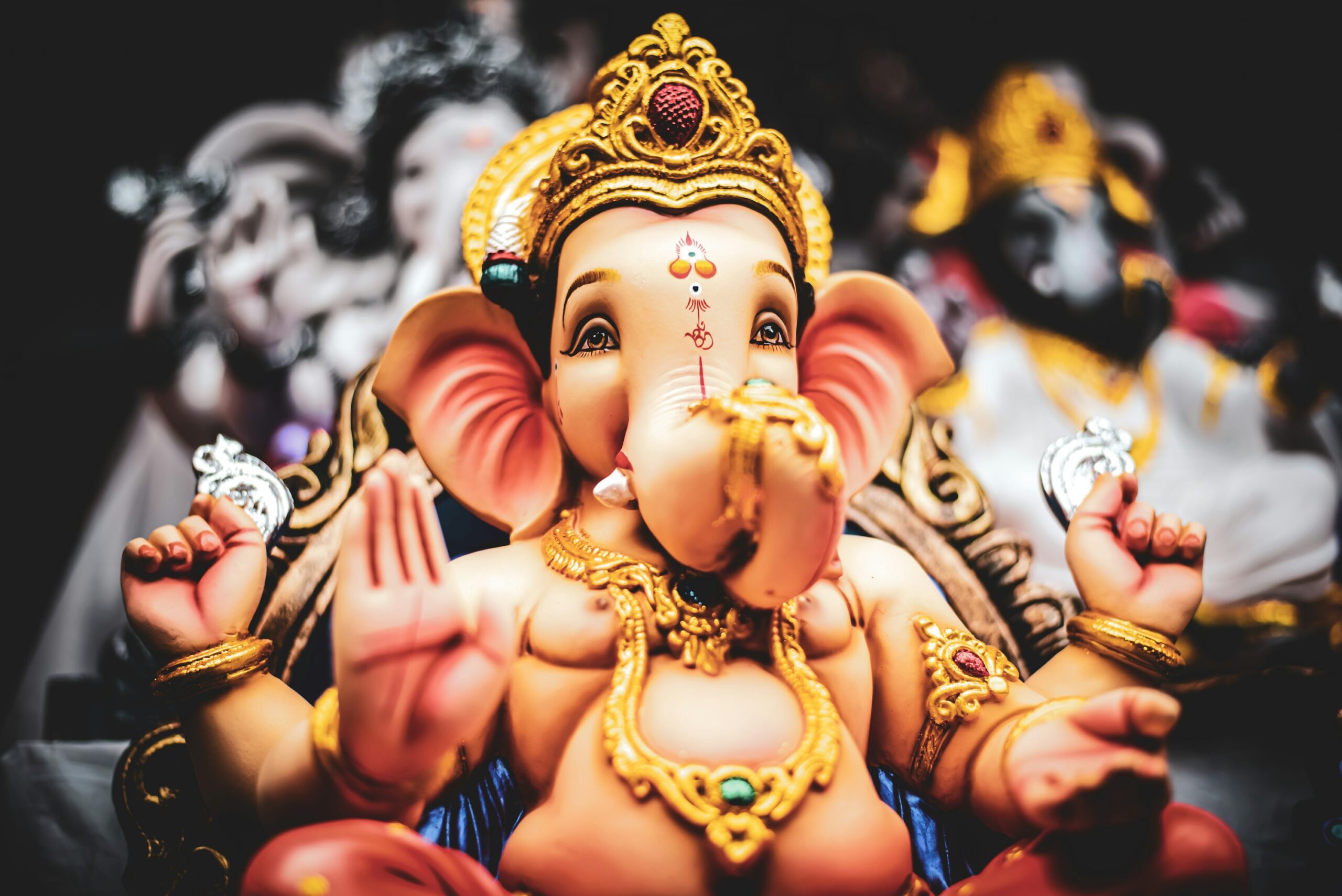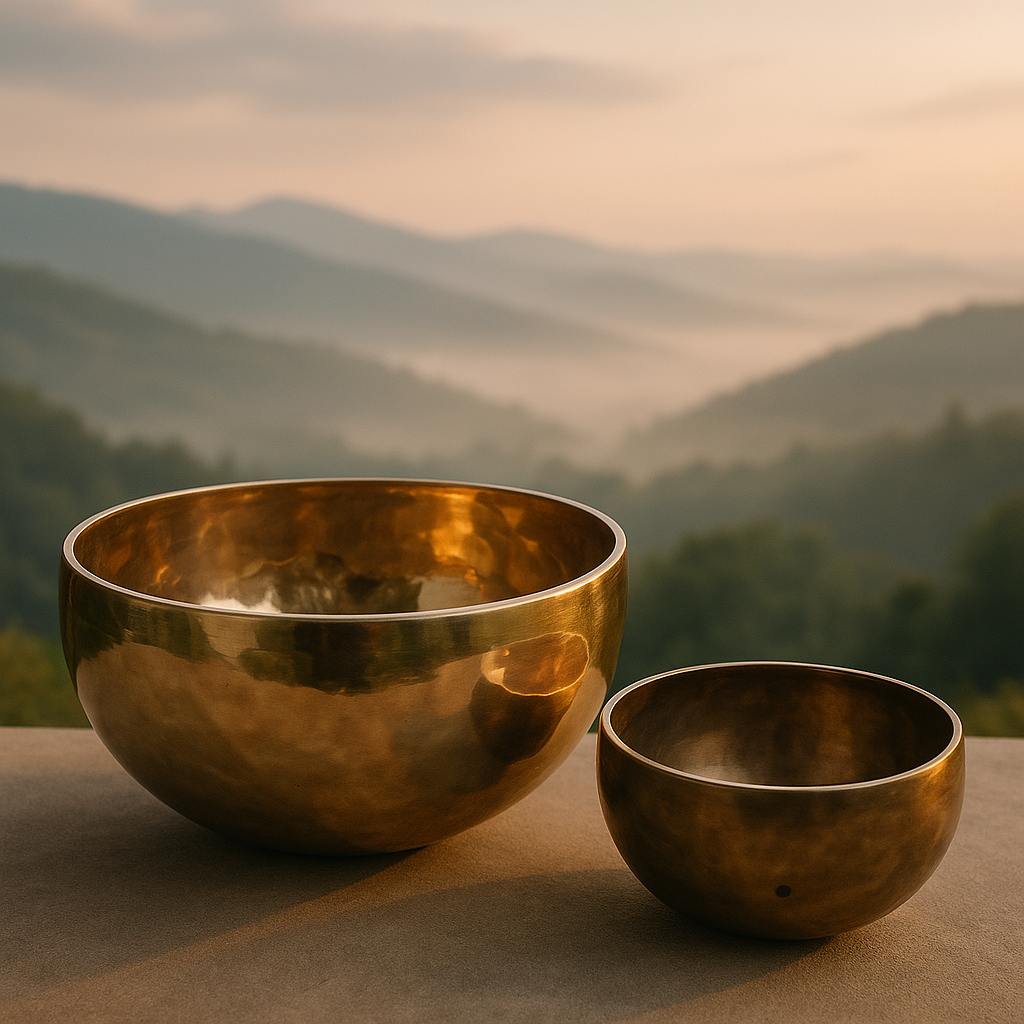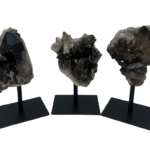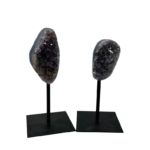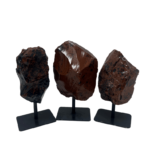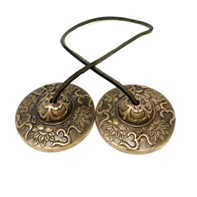
Tingshas: small but mighty
Tingshas have proven to be a small but mighty companion on my healing journey. They have such a light and pure sound that also has the piercing ability to cut through stagnant energy within and around me. These little metal cymbals are magical.
Tingshas are small, round metal cymbals connected by a leather or cotton cord. They’re traditionally made from a special bronze alloy and are used in Tibetan Buddhist rituals and Himalayan healing practices. When gently struck together, they create a clear, high-pitched tone that’s both grounding and awakening. Despite their size, their sound can cut through the noise—both externally and internally.
I first came across Tingshas at my local farmers market in Madison, Wisconsin. There were a couple of different kinds of them sitting on a cloth-covered table alongside Himalayan singing bowls inscribed with Sanskrit.
I was just getting into providing sound bath meditation for my community and wanted to find something to begin and conclude my sessions. I instinctively gravitated toward the Tingshas, which were perfect for the job—and also a little easier on my wallet than the decorative bowls.
I chose a set of Tingshas with symbols that were explained to me as meaning “Om Mani Padme Hum,” which can be translated as “Hail to the Jewel in the Lotus.” I later found out this is a mantra used to focus the mind on inner peace—and that’s exactly what it does.
I ended up using my Tingshas for every meditation session I hosted. They’ve become a cornerstone of my practice. There’s a noticeable transition when the serene soundscape of the crystal bowls fades into the paradoxically sharp yet soft chime of the Tingshas. The sound cuts through the silence, gently signaling the end of a session. I follow the Tingsha with a warm, “Welcome back,” helping ease participants out of their calm, theta brain state.
Over time, I’ve learned by doing—by playing the Tingshas. I feel a certain attunement to vibrations, like music and other frequencies, that interact with my nervous system in intricate ways. Playing the Tingshas in sessions and at home in my own practice, I’ve discovered a few key things:
I’ve learned that with Tingshas, the softer the sound, the better—and more soothing it is for everyone. I sometimes feel an uncomfortable jolt in my body when I accidentally strike them with too much force. The resulting sound is sharp, even jarring. It’s important not to put too much force behind the motion to maintain a pleasant, grounded atmosphere for the client.
There are a few different ways to hold and play Tingshas, but the way I’ve always done it is to hold the string that connects the Tingshas in both hands, close to each cymbal. I bring them close together—without touching just yet. Then, very gently, when the moment is right, I tap them together with a subtle motion and then slightly pull them away from each other. Letting them ring into complete silence isn’t a must, but I’ve found it to be beneficial. It invites a kind of spaciousness. Making sure to breathe—and even syncing the breath with the sound—has the power to reset the whole vibe.
In the Level 1 Atma Buti Sound Healing class, where we learned the first protocol to heal, we closed the session by gently tapping the Tingshas together, then sweeping them slowly over the body from the head to the feet. This practice clears any lingering stagnant energy. When this was done to me with my eyes closed, I was in such a relaxed and aware state that I could physically feel where the Tingshas were being traced. It was incredibly noticeable and energy-shifting.
Although they are small, they hold great power. Sometimes the smallest tools make the biggest difference. If you’ve never tried them, listen with your heart—you might be surprised by what clears away.
Author: Angelo Arnold
